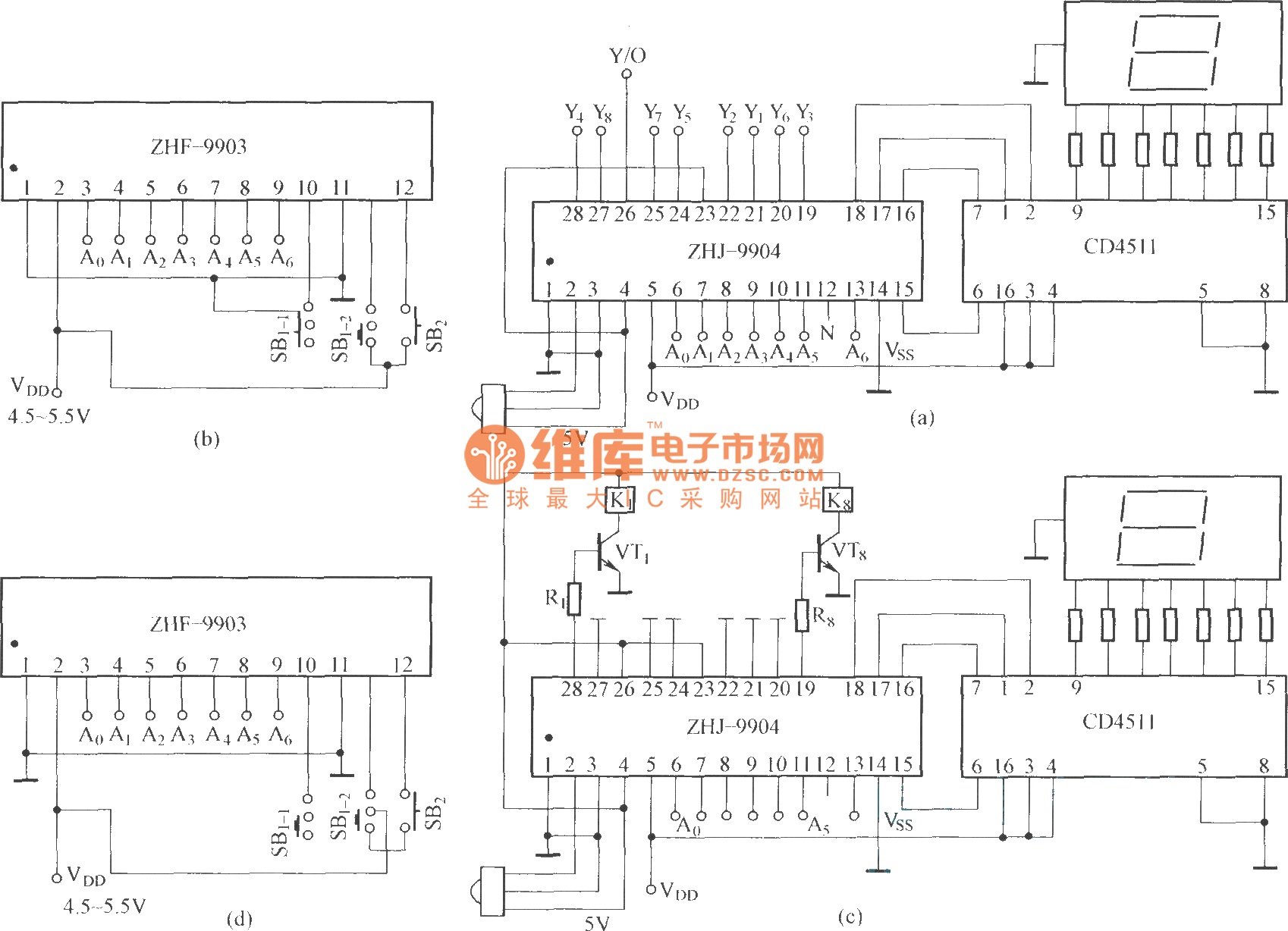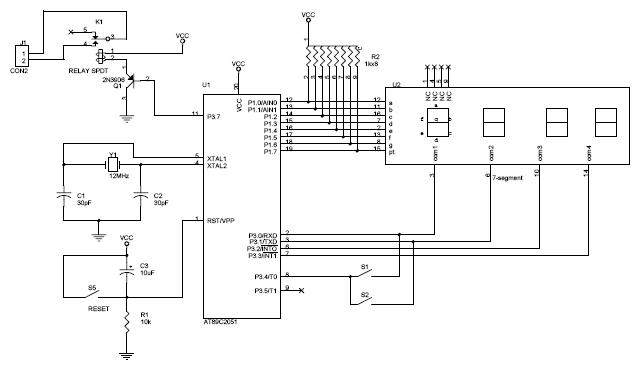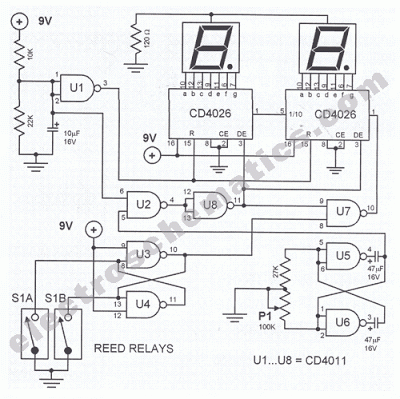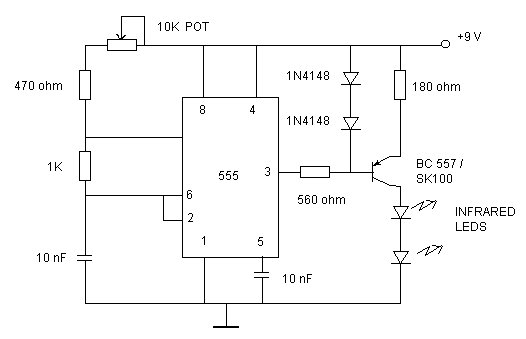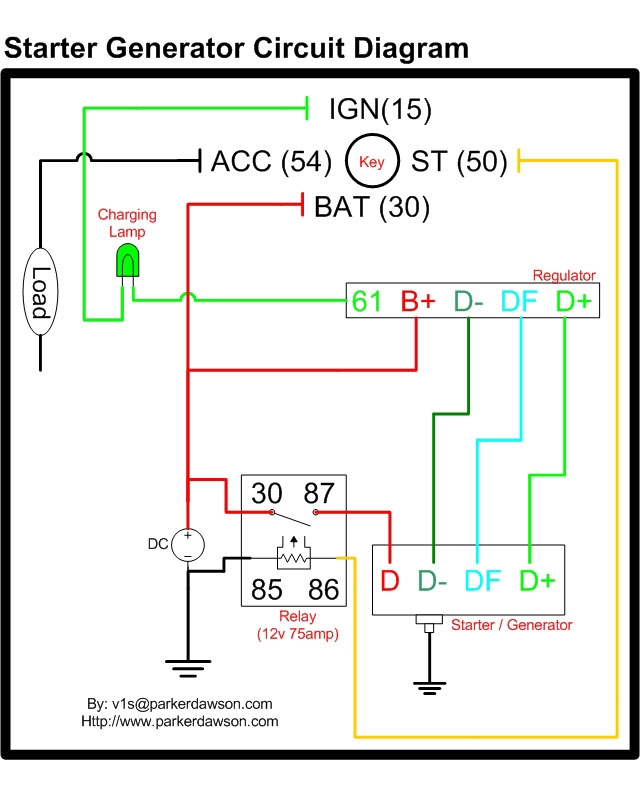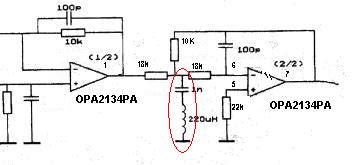
clock generator circuit
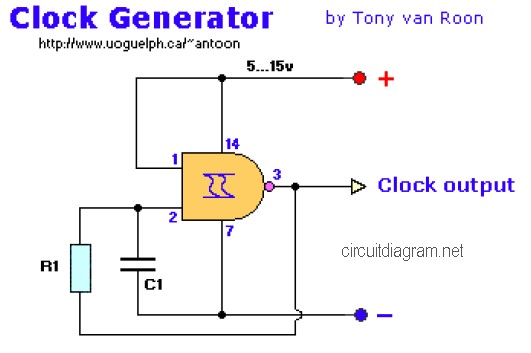
The following diagram is the clock generator circuit diagram built using NAND gate logic integrated circuits (ICs). The circuit can utilize either the IC 7400, which is a TTL type, or the IC 4011, which is a CMOS type. The 4011 is generally more cost-effective than the 7400, although the 7400 operates at higher speeds. This circuit serves as an excellent clock generator, specifically designed to produce a 1Hz clock signal, commonly used in digital clocks and counter applications. Typically, circuits generating a 1Hz clock utilize ICs in conjunction with a crystal and trimmer capacitors. However, equivalent or improved accuracy can be achieved using a chip-on-board (COB) device. Additionally, the circuit described includes a doorbell feature with flashing LEDs for enhanced visual appeal. The NE555 timer IC is employed as a clock generator configured as an astable multivibrator, allowing frequency adjustments via a potentiometer (VR1). The clock pulses generated by the NE555 are then sent to a sound effect generator using the UM3561 chip, which produces four distinct sound effects. The UM3561 generates sound signals that are amplified by a 2N3706 transistor, enabling audible output. Furthermore, a simple ticking bomb sound generator circuit is presented, which mimics the sound of a ticking clock. The tick frequency can be varied using a 220k potentiometer, and the circuit activates by charging a 2.2µF capacitor. Lastly, a schematic diagram of a Western music generator circuit based on the HT82207 IC is included. This circuit is designed to play pre-programmed Western music and utilizes an 18-pin HT82207 integrated circuit, which manages most of the functionalities.
The clock generator circuit utilizes NAND gate logic to create a stable 1Hz output, ideal for applications requiring precise timing. The choice between the 7400 and 4011 ICs allows flexibility based on availability and performance requirements. The 7400, being a TTL device, offers faster switching times, making it suitable for high-speed applications, while the 4011 provides a cost-effective solution with adequate performance for most clock generation tasks.
The NE555 timer is a versatile component widely used in timing applications. Configured as an astable multivibrator, it continuously oscillates between high and low states, producing a square wave output. The frequency of oscillation can be finely tuned with the use of a potentiometer, allowing for customization of the clock signal to meet specific requirements. This feature is particularly beneficial in digital clock designs, where accurate timing is crucial.
The sound effect generator circuit utilizing the UM3561 chip is capable of producing a variety of audio outputs, making it suitable for applications such as doorbells or novelty sound effects. The integration of a transistor driver (2N3706) allows for the amplification of the audio signal, ensuring that the sound is audible in various environments.
The ticking bomb sound generator circuit provides an interesting application of timing circuits, utilizing a simple capacitor charge and discharge mechanism to create a recognizable ticking sound. This circuit can be used in toys or prank devices, adding an element of fun.
Lastly, the Western music generator circuit based on the HT82207 IC demonstrates the capability of integrated circuits to deliver complex functionalities in a compact form factor. This circuit can be used in various entertainment devices, showcasing the versatility of modern electronic design. Overall, these circuits illustrate the practical applications of timing and sound generation in everyday electronics.The following diagram is the Clock Generator circuit diagram which build based on NAND Gate logic IC. You may use IC 7400 or 4011 for this circuit. The 7400 is a TTL type, while 4011 is CMOS type. IC 4011 is cheaper than 7400 but the 7400 is faster than 4011. Circuit Notes: Excellent clock. This is the 1Hz clock generator circuit with Chip On Boa rd (COB). Commonly, the circuits to produce 1Hz clock for digital clock and counter circuits applications implement ICs in conjunction with a crystal and trimmer capacitors, etc. Even so, equivalent or improved accuracy could be obtained working with a chip-on-board (COB) device found inside a.
This is the door bell circuit with flashing LEDs to make the circuit more attractive. IC1 (NE555) is applied right here as being a clock generator. It is actually set up as an astable multivibrator whose frequency could be altered using the support of potensiometer VR1. The clock pulses received from IC1 are fed to. This is a really simple sound effect generator based single sound generator chip UM3561. The UM3561 will generate four kinds of sound effects. The basic operation is that the UM3561 will generate the sound signal, then the signal delivered to 2N3706 (as speaker driver) to be amplified so you can hear the sound from a.
Here the low cost and easy build circuit of ticking bomb sound generator. This circuit generates a sound matching to a loud clicking clock. The frequency of the tick is altered through the 220k potensiometer part. The circuit gets going by charging the 2. 2uF and when 0. 65v is on the base of the NPN transistor, . This is the schematic diagram of Western music generator circuit based on single IC HT82207. This circuit is able to take you towards the world of the Wild West. The western music already programmed in the chip. It utilizes the integrated 18-pin HT82207 (IC1) of Holtek, which literally takes care of almost everything. You`ve to. 🔗 External reference
The clock generator circuit utilizes NAND gate logic to create a stable 1Hz output, ideal for applications requiring precise timing. The choice between the 7400 and 4011 ICs allows flexibility based on availability and performance requirements. The 7400, being a TTL device, offers faster switching times, making it suitable for high-speed applications, while the 4011 provides a cost-effective solution with adequate performance for most clock generation tasks.
The NE555 timer is a versatile component widely used in timing applications. Configured as an astable multivibrator, it continuously oscillates between high and low states, producing a square wave output. The frequency of oscillation can be finely tuned with the use of a potentiometer, allowing for customization of the clock signal to meet specific requirements. This feature is particularly beneficial in digital clock designs, where accurate timing is crucial.
The sound effect generator circuit utilizing the UM3561 chip is capable of producing a variety of audio outputs, making it suitable for applications such as doorbells or novelty sound effects. The integration of a transistor driver (2N3706) allows for the amplification of the audio signal, ensuring that the sound is audible in various environments.
The ticking bomb sound generator circuit provides an interesting application of timing circuits, utilizing a simple capacitor charge and discharge mechanism to create a recognizable ticking sound. This circuit can be used in toys or prank devices, adding an element of fun.
Lastly, the Western music generator circuit based on the HT82207 IC demonstrates the capability of integrated circuits to deliver complex functionalities in a compact form factor. This circuit can be used in various entertainment devices, showcasing the versatility of modern electronic design. Overall, these circuits illustrate the practical applications of timing and sound generation in everyday electronics.The following diagram is the Clock Generator circuit diagram which build based on NAND Gate logic IC. You may use IC 7400 or 4011 for this circuit. The 7400 is a TTL type, while 4011 is CMOS type. IC 4011 is cheaper than 7400 but the 7400 is faster than 4011. Circuit Notes: Excellent clock. This is the 1Hz clock generator circuit with Chip On Boa rd (COB). Commonly, the circuits to produce 1Hz clock for digital clock and counter circuits applications implement ICs in conjunction with a crystal and trimmer capacitors, etc. Even so, equivalent or improved accuracy could be obtained working with a chip-on-board (COB) device found inside a.
This is the door bell circuit with flashing LEDs to make the circuit more attractive. IC1 (NE555) is applied right here as being a clock generator. It is actually set up as an astable multivibrator whose frequency could be altered using the support of potensiometer VR1. The clock pulses received from IC1 are fed to. This is a really simple sound effect generator based single sound generator chip UM3561. The UM3561 will generate four kinds of sound effects. The basic operation is that the UM3561 will generate the sound signal, then the signal delivered to 2N3706 (as speaker driver) to be amplified so you can hear the sound from a.
Here the low cost and easy build circuit of ticking bomb sound generator. This circuit generates a sound matching to a loud clicking clock. The frequency of the tick is altered through the 220k potensiometer part. The circuit gets going by charging the 2. 2uF and when 0. 65v is on the base of the NPN transistor, . This is the schematic diagram of Western music generator circuit based on single IC HT82207. This circuit is able to take you towards the world of the Wild West. The western music already programmed in the chip. It utilizes the integrated 18-pin HT82207 (IC1) of Holtek, which literally takes care of almost everything. You`ve to. 🔗 External reference
